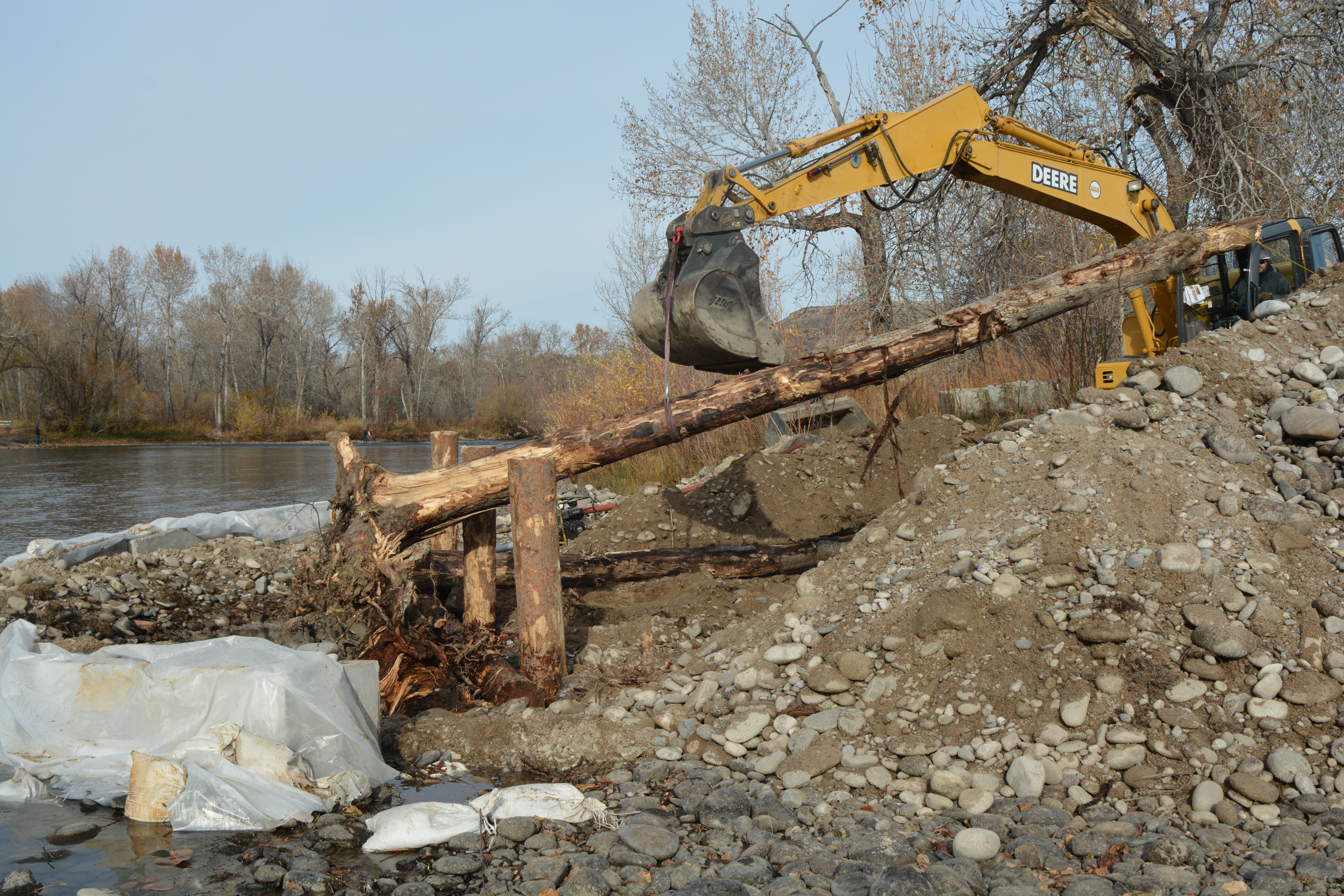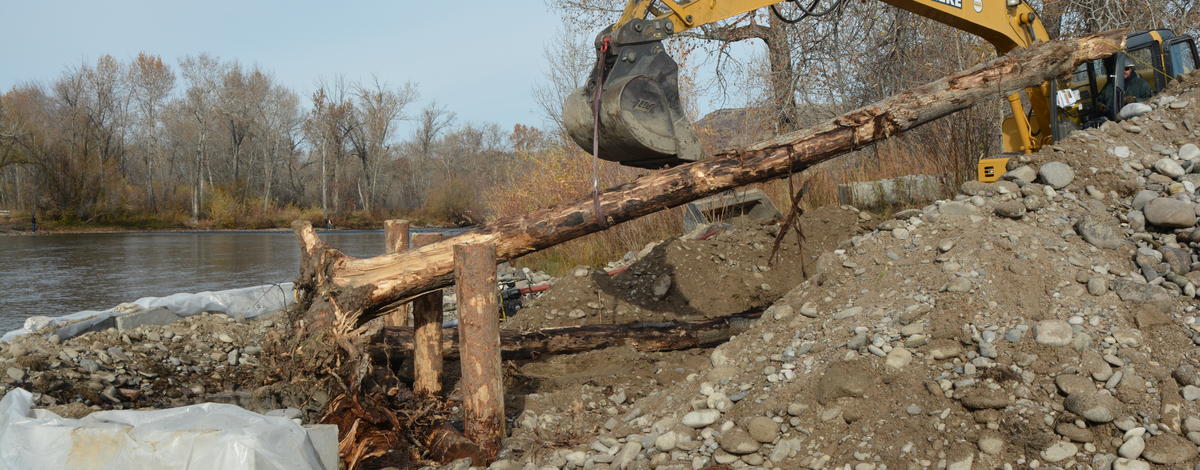The Boise River is a picturesque stream flowing through Idaho’s capitol city, and any television footage seems to include a fly fisherman casting into a riffle for trout. But as fish habitat, the river could use some improvement.

Those classic riffles flowing over golden cobbles look great for the camera, but swift current and straight, uninterrupted channels aren’t ideal trout habitat.
Idaho Fish and Game and several partners are improving some of that on a short section of river near Barber Park. Crews are adding boulders and “engineered” log jams to break up the current and benefit fish.
More structure in the river provides a variety of habitat. It breaks up the current and provides places for fish to rest, shady areas that hold cooler water, and wood that hides young trout, as well as food for insects that in turn feed trout.
According to Regional Fisheries Manager Joe Kozfkay, before Boise existed, the river was broad, multi-channeled, dynamic and complex.
“As development encroached and flood reduction was needed, the channel was altered gradually over time into something more straight and simple. For the most part, fish prefer the former, especially trout,” he said.
But that complex habitat is challenging to get back. A river flowing through a city needs to be stable. Flows can fluctuate, but the river needs to stay in its channel. Natural log jams that make great fish habitat can be hazardous to floaters, who ply the Boise River by the thousands during summer.
“Turning back the clock back to the river’s old self is not possible or desirable, so fish biologists and river conservationists look for ways to improve fish habitat without increasing flood risk and or negatively impacting other river uses and users,” Kozfkay said.
Jeanne McFall is an engineer for Fish and Game, but rather than designing boat ramps or buildings, she designs rivers, or redesigns them, technically speaking. McFall said a natural river is full of obstructions, including trees, stumps, logs, boulders, beaver dams, etc.

“If you want a good fishing river, you need a fair amount of wood, cover and structure to support pools and complexity,” she said.
Part of her job is adding them back when they’re absent. Typically, she does it on streams that support “anadromous” fish, which are salmon and steelhead that go to the ocean as young fish and return as adults. Having places for young fish to rest, feed and escape predators before migrating to the ocean is critical to those species.
The same things that benefit salmon and steelhead benefit trout as well. Her work is typically done in rural, or remote areas, but it’s the same basic concepts they are now doing in the Boise River.
But McFall and her crews can’t just dump wood into a river and hope for the best. She studied the Boise River’s historic flows and accounted for the things out of the norm, such as a 100-year flood, and calculated how to anchor the logs to ensure they will stay put. That’s the “engineered” part of a log jam, even though it might appear to the casual observer as a random pile of logs. Some are anchored as deep as 20 feet into the river bed to keep them secure.
“As engineers, that’s part of our job,” she said, noting that while they do the same engineering in other rivers, the Boise project included working with several agencies and groups to get it right.
“It’s been a very coordinated effort,” she said.
The $45,000 project is being done through the Ada County Environmental Advisory Board, which formed in 2015 after a power outage at Barber Dam reduced river flows for a short time. The board includes staff from Ada County, the Boise River Enhancement Network, Fish and Game, Trout Unlimited, The Freshwater Trust and Fulcrum/Enel Green Power North America. The project was funded by Ada County and EGP-NA, who operates Barber Dam.
The work is being done in a short stretch of about 120 yards between Eckert Bridge and the boat ramp at Barber Park. That puts it above the popular inner tubing stretch where it’s unlikely to present safety hazards to floaters, but it will benefit anglers.
While the Boise River’s habitat might not be pristine, it’s a good fishing stream that attracts lots of anglers to catch its healthy populations of rainbow trout, brown trout and whitefish. The river attracts anglers nearly year round and produces trophy-sized trout, despite the heavy fishing pressure.

Kozfkay and McFall expect the habitat improvement will make fishing even better.
“I do think there will be a noticeable difference in fishing,” McFall said. “When you add complexity to the river, you increase the fish density. The fish just love it, and the fishermen should love it, too.”

